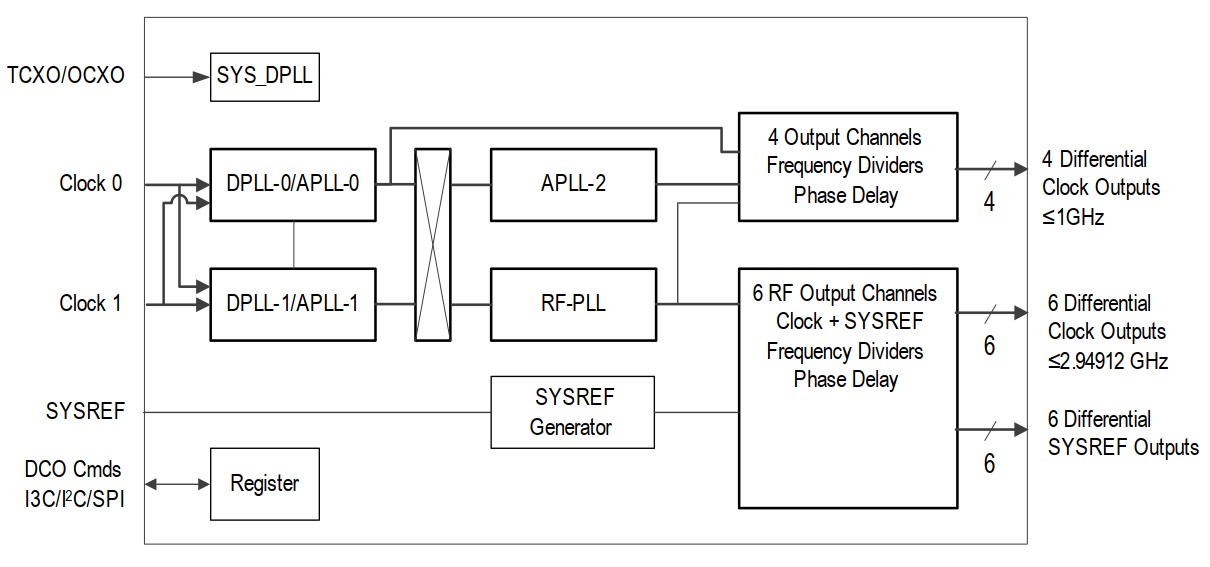The 8V19N850 radio synchronizer and 8V19N880/8V19N882 jitter attenuators enhance a radio unit’s timing capabilities.
 We’ve all heard the phrase “timing is everything” and that certainly applies in wireless and wired networks. To that end, Renesas Electronics has expanded its communication timing portfolio by adding three low phase noise, high-frequency RF timing ICs for 4G and 5G radios: The 8V19N850 radio synchronizer (product page/datasheet), the 8V19N880 (product page/datasheet), and the 8V19N882 (product page/datasheet) JESD204B/C clock jitter attenuators.
We’ve all heard the phrase “timing is everything” and that certainly applies in wireless and wired networks. To that end, Renesas Electronics has expanded its communication timing portfolio by adding three low phase noise, high-frequency RF timing ICs for 4G and 5G radios: The 8V19N850 radio synchronizer (product page/datasheet), the 8V19N880 (product page/datasheet), and the 8V19N882 (product page/datasheet) JESD204B/C clock jitter attenuators.
Renesas claims that the 8V19N850 radio synchronizer is the industry’s first integrated 5G radio synchronization IC, combining features for radio synchronization on a single chip that include full ITU-T G.8273.2 T-BC/T-TSC Class C, ITU-T G.8262.1 enhanced SyncE, and JESD204B/C compliance. JESD204B/C is a standard for clocks used in data converters. The 8V19N850 can recover clocks from CPRI/eCPRI, per IEEE 802.1cm (Time-Sensitive Networking for Fronthaul) fronthaul synchronization requirements. This feature makes it suitable for radio units 5G Open RAN architectures.
The 8V19N850 supports two independent frequency domains. You can use one for the digital clock (Ethernet and FEC rates) domain with four outputs, and a device clock (RF-PLL) domain with 12 outputs. The Ethernet domain generates frequencies from two independent APLLs for flexibility; the outputs of the RF clock domain generate very low phase noise clocks for ADC/DAC circuits.
You can configure 8V19N850 through its I3C, I2C, or 3/4-wire SPI interface. It as two differential clock reference inputs, of which one is LVDS and VLPECL compatible. The other provides a 1 Hz to 1 GHz frequency.
The 8V19N880 and 8V19N882 JESD204B/C clock jitter attenuators deliver jitter performance as low as 74 fs RMS and -90 dB spurious attenuation used for mission-critical industrial data converter applications such as in wireless radio, test and measurement, instrumentation, and high-performance imaging. The devices support frequencies up to 3932.16 MHz (up to 6 GHz with an external VCO) and feature 16 and 18 integrated differential outputs.






Tell Us What You Think!